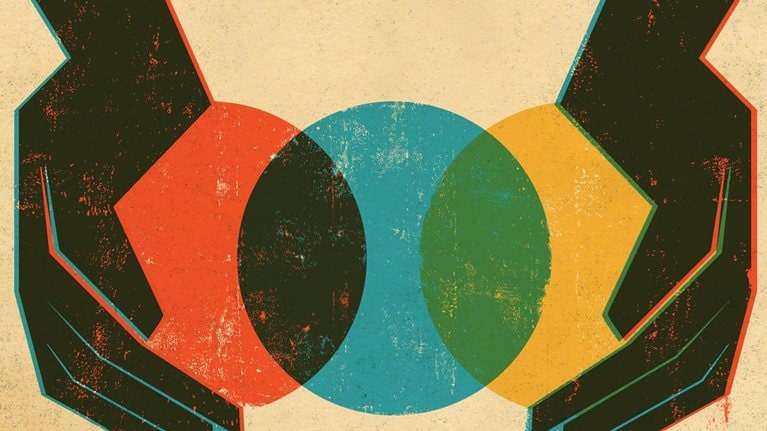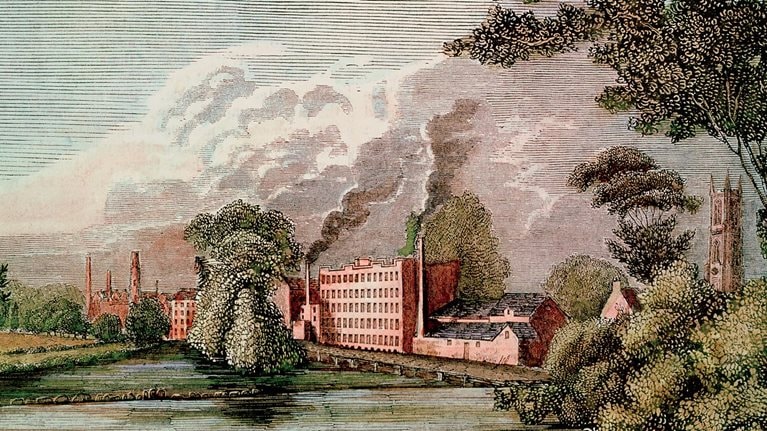Interview transcript
Digital IDs in India: A large-scale solution from government
Our view is that even before we have property rights, you need identity rights. Because unless a person can identify himself or herself and have some sort of proof of existence, you can’t even talk about him owning property or owning a car or whatever.
So we think that they’re related. Just like property rights bring people into the formal economy, into the formal capitalism kind of stuff, identity rights are very, very important for people to participate. So we think that that’s the basic problem to solve. Now, once [people] have their ID, then they can use that to get a job, open a bank account, have savings, buy property. So [these are] all things that come subsequent to having that basic identity.
India’s becoming much more of a mobile society, a migrant society. People are moving from villages to cities, from north to south, from central India to coastal India. And all of them are finding that when they make that transition—they go to a new state and new city—they have to prove to the local establishment who they are, or they can’t open a bank account, they can’t get a mobile connection, they can’t get their entitlements.
[People] see that [an ID] is an idea which helps them to get access to these various benefits [and] reduces harassment because once you have an ID, then people know who you are. So the idea is to link it to benefits. Because, fundamentally, the ID is optional. It’s not compulsory from our side. And then, of course, when people die, the number goes with them. We have a 12-digit number, which allows us to make sure it’s unique for a couple of hundred years.
We have tried to create a “coalition of the positive,” in the sense [that] a lot of people now have a stake in the success of this project. For example, because this [ID] is going to be the platform for electronic benefit transfers through the banking system, the banking system has an interest in helping us to make this work to deliver financial benefits. Since this is going to be the basis for “know your customer” for getting a mobile connection, it’s going to help the mobile industry. So we’re creating a coalition of the positive, of different kinds of stakeholders who have a stake in [the ID effort’s] success.
Delivering services through online IDs
One of the things that has happened in the last ten years in India is there has been a huge growth in social-welfare programs, in education, in health, pensions, and so forth. And therefore, existing systems can’t even cope with the demand [for] transactions. I think people recognize that this actually is something that’s going to take up a massive increase in transactions. So I think that [people] will view it very positively. These entitlement benefits, whether they’re cash or in kind, can now go directly into the person’s account. That will have a huge impact on public-service delivery.
The third thing is, because we can authenticate a person online, the receipt of a service can be anywhere on the cloud. Which means [recipients] can either go and get self-service on the Net or on their mobile phones, or they can go to multiple service delivery points, [be authenticated], and claim the service. So, suddenly, they’re empowered, because now they have the choice of accessing their public service anywhere. And they don’t even have to visit any department or something. I think all these things will have a lot of, hopefully, transformational aspects.
I think we have done a few design things to essentially make it as previously enabled as possible. For example, the information that we have on an individual is very simple: we just have the name, address, date of birth, sex, and, optionally, e-mail ID, phone number. And of course, we have the biometrics, but we use that only for “de-duplication” because the key thing is to make sure a person gets only one number.
When a bank uses the ID, for example, they only use it to verify a person [who actually comes] for a service. The data is not shared. Let’s say that you have your ID, you go somewhere, you open a bank account, and you give some authentication credential. We’ll just verify [that] and say it’s the same person. We don’t send any data back except verification that the person standing in front of you is the person he or she claims to be.
Conversely, because the banking system is using our ID for verification, the [user ID] system does not know what the bank is doing with it. So whether the person is withdrawing 100 rupees or 1,000 rupees [is] known only to the bank. You can think of this as a federated architecture where each player only knows their part of this sort of activity.
Taking the system to scale
There are a lot of things architecturally to drive scale, and we use a lot of innovative ideas in that. But what’s important is that we use innovation to build a platform. And then on this platform now, because of the open APIs1 and standards, we expect to see a lot of public- and private-sector innovation on top of this.
And to my sense, the best way to play the innovation story is that the government should really build the platforms but make [them] open in a way [so] that individual creativity and entrepreneurship can build more solutions. In the US, to me, the two big examples are the Internet, which was originally conceived as a defense project, and GPS.2 Again, it was a defense project. Both these things, though they began as [part of] a government defense infrastructure, today are the basis for huge innovation. So we’re saying, having seen that, is there a way to architect [the digital ID] from day one to make it a platform for innovation?
Measuring success
Our goal, our vision, is by 2014 to have at least half a billion people on the system, which will make it one of the world’s largest online ID infrastructures. So that’s one metric of success. The second is we’d like to see two or three major applications that use this ID infrastructure. One of them is electronic benefit transfer, where governments will pay pensions, scholarships, or whatever entitlements by cash. And the third is [that] the mobile industry will use [the ID infrastructure] for verification.
So if [there are] two or three large applications where people are using this [ID infrastructure] in their day-to-day lives, where there are half a million people enrolled, and millions of people are receiving electronic benefits into their accounts, we would see that as a good thing to do.

